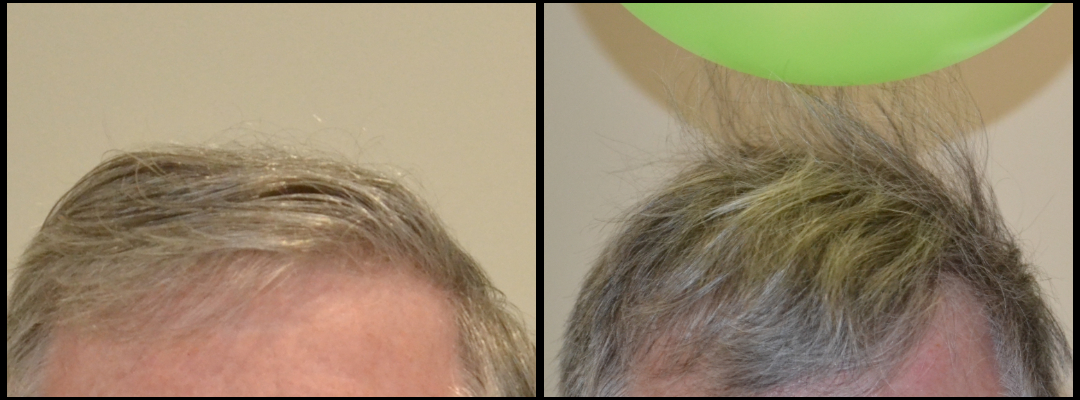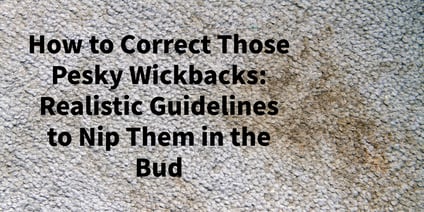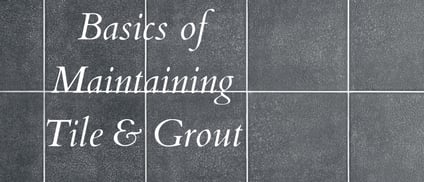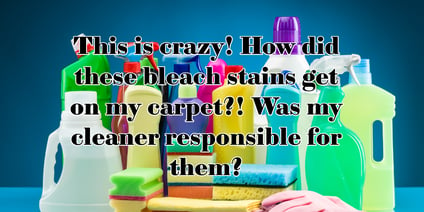
Remember shuffling your feet across nylon carpet, reaching for a doorknob, and you feel a Zap! Better yet, touch someone else and you let them receive the zap. Rub a balloon across your hair and stick it to the wall. Maybe you saw sparks fly when you would peel off your sweater in a dark room. Static electricity is such fun for kids.
It requires 3,500 volts or more for you to feel the jolt from a static electric discharge. Those sparks or miniature lightning bolts range from 2,000 to 10,000 volts. Unexpected shocks can be a safety hazard, especially if one is on a ladder or scaffold, or operating equipment. Static discharge of only 200 or 300 volts (1/10 of the level that can be felt), may damage sensitive electronic equipment; for some circuitry, the damage threshold is 20 volts or less.
ESD (electrostatic dissipative or electrostatic discharge) flooring is specially designed and installed to prevent damage to sensitive electronic gear and eliminate safety hazards. ESD flooring must be properly maintained or it can cease to function properly. To understand the full picture, let’s explore exactly what static build-up is, what causes it, the various types of ESD flooring and how they function, and finally how to maintain these special floors.
What is Static Electricity?
All molecules include negatively charged electrons around the outside and an equal number of positively charged protons at their center. When objects come into contact with each other and then separate, one material may pull electrons from the other causing an imbalance and a net electrical charge. Some materials hold onto electrons tightly while others give them up freely. When you walk across a nylon or wool carpet, the leather or rubber soles of your shoes collect electrons and pass them along to your skin. The negative charge builds with each step and can reach 20,000 to 250,000 volts or more.
Eventually, you touch or get close to something with a (comparatively) positive charge. At this point, all of the electrons that you have gathered make the jump, and a spark or a zap occurs. This shock is relatively harmless if it was your kid brother that took the brunt of the jolt, however it can be destructive to many electronic devices. Data on discs can be lost, circuit boards fried, etc. There are also many situations where this can be costly (the manufacture of electronics, for example) or even carry the potential for serious harm or death such as in a 911 call center or airport control tower.
To prevent damage from electrical discharges there are a variety of static control flooring materials, different ways to achieve static control, and various types of flooring.
Static Control Carpet
One of the common complaints about early generations of nylon carpeting was how quickly a static charge could build up and how easily and often customers with wall-to-wall nylon carpeting would experience a zap.
As every IICRC Carpet Cleaning Technician (CCT) class teaches, the third generation of nylon was constructed with changes to reduce this electrical effect by making the fiber more conductive. Carbon fibers mixed into the tufts were one common means to accomplish this. That helped reduce the annoyance felt by people, but as computers and electronics advanced, it was clear that these devices were more sensitive than people are.
Aftermarket static spray could be applied to freshly cleaned carpets. This could be a conductive material or something as simple as a solution of table salt to attract moisture to the carpet. The useful life would be three to six months or until the next cleaning. It might need to be reapplied then. However, the season for static was usually the months of low humidity and three to six months was often sufficient until the next dry season.
As the demand for anti-static carpets grew, carpet manufacturers brought out 3.5kV commercial carpets. 3.5 kV (3500 volts) became the threshold for human detection. Lower voltages of static might still be discharged at this voltage, but people would not feel it. This was accomplished by adding more and larger diameter fibers of carbon or other conductive materials to the face yarns. These could either be fibers plied into the tuft or blended into the synthetic fibers themselves.
These carpets essentially spread any static charge over the face of the carpet, but the charge was not diverted to the ground
To eliminate the lower static charges that would not be noticed by humans but could still destroy sensitive gear, carpets were developed that included conductive fibers in the yarns. These carpets are connected to a conductive backing. The carpet was adhered to the floor with conductive adhesives and then connected through wiring or conductive subfloor to the building, the ground, or AC electrical ground.
The resistance between points on the surface of an ESD carpet is important. If the resistance is too low (carpet is too conductive), any static is quickly spread to all areas. If the resistance is too high, the carpet will not dissipate the static load. The comparative resistance of shoes can make a difference. Leather shoes, especially with rubber soles are normally a good insulator with high resistance. Electricity will always follow through the path of least resistance. If shoes get soaked coming in from the parking lot on a rainy day, those shoes could become very conductive and pass any charge directly to the wearer’s body. If he picks up a telephone headset, for example, it might get fried. Manufacturers and those operating critical sites are concerned that maintenance keeps the carpet within safe operating limits.
Electrostatic discharge carpets usually consist of tiles as opposed to broadloom.
Other Electrostatic Discharge (ESD) Flooring
The fact that you might get a shock after walking across a nylon carpet but not if you walked across olefin fibers, demonstrates the point that some materials or combinations of materials are more likely to collect or release electrons and build up a charge. A key goal of some ESD flooring is to avoid generating a charge in the first place rather than create a charge and then dissipate it. The materials in the flooring must be selected so they can interact with a variety of materials in footwear without generating much charge. This approach is called eliminating walking body voltage.
Vinyl flooring also gives rise to static electric charges. Vinyl tile (VCT) and vinyl sheet goods may be infused with conductive materials (mostly graphite or carbon). These can either be applied to the surface of the flooring or blended throughout the entire thickness of the vinyl. As with carpet, connections to the ground plane and resistance across the surface of the floor may be critical. Since vinyl does generate a charge, special footwear may be required even if the floor is grounded.
Epoxy coatings for cement floors are available that have proper conductance and also offer long life and good appearance. Proper maintenance for all these floors is important.
Maintenance & Cleaning
Every flooring manufacturer has instructions on how and how often they wish their floors to be maintained. There are some common points and a few differences.
Key points to be mindful of when cleaning any ESD flooring include:
- Make sure to provide good preventive maintenance. Extensive use of entry mats, daily dust mopping, vacuuming, and so forth. Because the floors should not be subjected to strong alkalines, acids, or concentrated solvents, it is better to prevent the floor from getting highly soiled than to allow conditions to get to a state that requires restorative cleaning.
- React to spots and spills quickly. If spills are attended to quickly, it may require nothing more than blotting up the spill or a little water to remove them. Keeping just a couple of spotters readily available for maintenance personnel allows them to react quickly and remove spots and spills before they are absorbed into the surface. Have a mild spotter for water-based spills such as Avenge Neutral and one for solvent-based spills such as Solvent Clean.
- Do not over-wet floors. Critical grounding connections can be shorted out if water gets to the subfloor level.
- Use neutral or near-neutral cleaning agents. Viper 7 is a good choice for vinyl or epoxy flooring. Spinergy Vivid is another great choice as it contains no chelating agents. Both rinse freely. For carpets keep the pH below 10. Use a prespray that rinses very easily.
- Residues can interfere with conductivity and resistance. Vinyl floors can be rinsed with clear, cool water. Add a bit of Fab-Set to the rinse when extracting carpet.
- ESD carpet manufacturers allow both hot water extraction and encapsulation cleaning with a counter-rotating brush. Dry powders can be used (Brush Pro Dry Compound) or liquid encapsulation products (Encapuclean Green DS) if they are not over-used. Too much encapuclean can create residue issues. Some brands favor hot water extraction as the main method while others prefer dry compound as the preferred method.
- Vinyl floors may be buffed with white polishing pads or beige pads. Some can be spray buffed with red pads. Use only coatings (floor finish, wax etc.) that have been approved by the flooring manufacturer. Some sell their own private label brands.
You are now the expert who can be the source of information on ESD flooring for your customers and potential customers. Rather than running from these jobs, you can seek them out, and service them at premium prices while putting their minds at ease about the safety of their employees, visitors, and sensitive equipment.
Enjoyed reading this post? Read the following articles:



